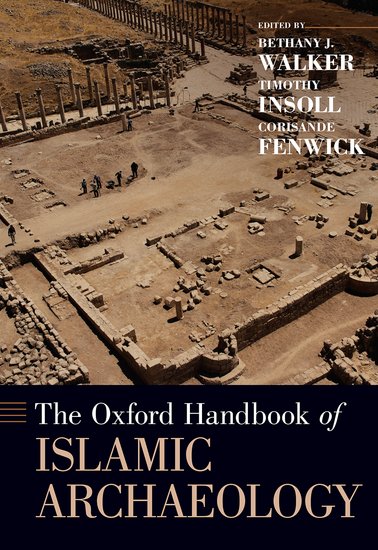
The Oxford Handbook of Islamic Archaeology
Tom Verde
Bethany Walker, Timothy Insoll and Corisande Fenwick, eds.
2020, Oxford University Press, 978-0-19998-787-0, $175 hb.
The wider, historic Islamic world—from West Africa to Southeast Asia—is canvassed in this overview of its archeological past, broken down by individual regions (Arabia and the Gulf, Central Asia, the Sahara, etc.). Chronologically, the chapters, penned by various experts, extend from “medieval to modern,” commencing with the Islamic conquest of the Levant in the seventh century CE and extending up to the 21st century. Rich in history, each chapter discusses major finds and how they inform our understanding of Islam’s impact on such dynamics as architecture, trade, material culture, rural versus urban society and more. In the discussion of Syria’s early Islamic past, we learn that under the Abbasids, mosques began to be “characterized by their large dimension and belong to a Mesopotamian tradition.” An exceptionally informative reference work for the scholar and lay reader alike.
You may also be interested in...

Asma Khan’s Monsoon Cookbook Reclaims Taste of Home—Our Book Review
Known for her all-female kitchen at London’s Darjeeling Express, Asma Khan transforms her new cookbook into a memoir, steeped in nostalgia.
In War and Peace, Book Explores How Rome and Persia Remained Frenemies
Book Review: In his latest scholarly work, Roman historian Adrian Goldsworthy reduces Persian and Roman longevity to simply an ever-evolving coexistence.